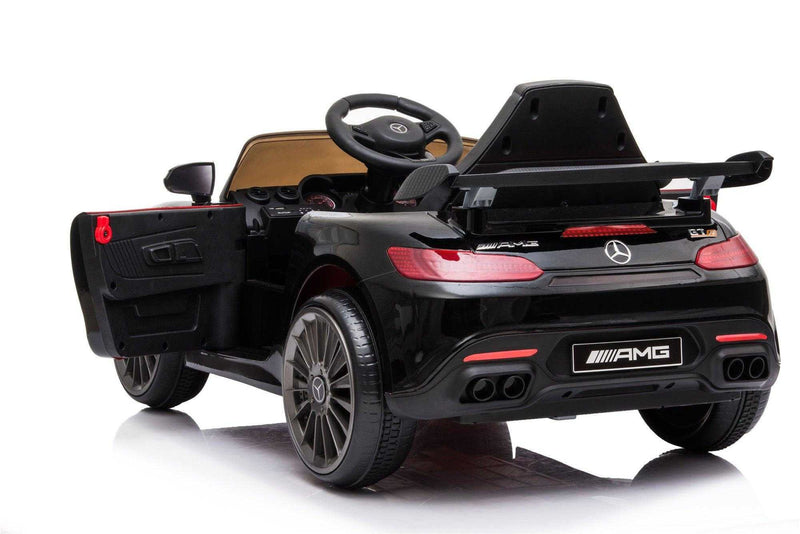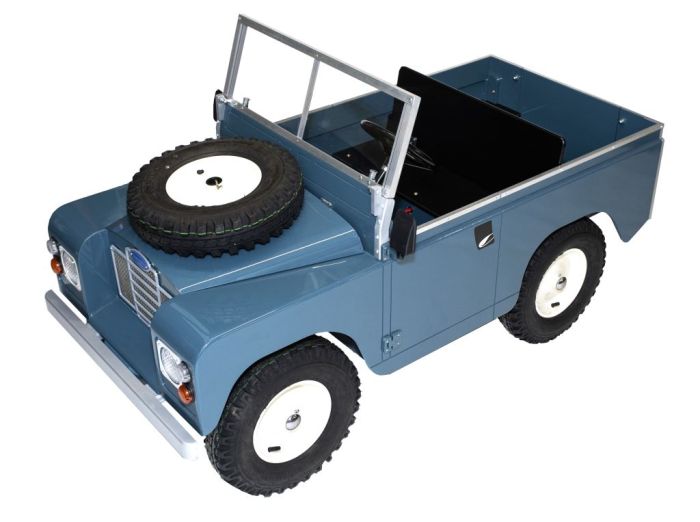Best Advice To Selecting Remote Control Childrens Cars
Best Advice To Selecting Remote Control Childrens Cars
Blog Article
What Safety Features On The Ride-On Car Should I Take Into Consideration? Pros And Pros And
When selecting a ride-on car for your child the safety features must be considered to ensure their safety while playing. Here are some important safety features to consider as well as their pros and cons - Seat Belts -
Pros: Seat belts are a great way to keep your child secure in the car they ride in. They can reduce the risk of your child falling out during play or being ejected. They also provide extra protection especially during sudden stops or turns.
Cons - Some rides-on-cars do not include seat belts. This is especially true for those that are specifically designed for toddlers. Children may be able to find seat belts restrict their mobility or uncomfortable, leading them to refuse or resist using them.
Sturdy Construction
Pros – A ride-on made of strong construction and top quality materials is durable and resistant and can provide security and reliability for a long period of time. It's made to be strong enough to handle the stresses of the game while ensuring stability.
Cons - The durability of the construction comes with a steep price, which can make it difficult for many families. Ride-on cars can be less mobile and maneuverable in the event that they are constructed of heavy materials.
Low Center Of Gravity
Ride-on cars with a low center gravity tend to be less likely than others to tip over, which could reduce the chances of injuries and accidents. They offer greater stability and stability, especially during turns and maneuvers.
Pros - Ride-on vehicles that have a low centre of gravity may compromise off-road capability or ground clearance, which restricts their flexibility.
Child Remote Control -
Pros: Remote-controlled vehicles give parents the capability to observe and supervise their child's playing, adding an additional layer of control and safety. Parents can intervene in case of emergency, navigate difficult terrain, or prevent collisions.
Cons - Parental remote control may limit a child's autonomy in their independence, freedom and play, as they'll rely on the direction and assistance of their parents while playing. Remote-controlled models can be more expensive than ride-on vehicles which are operated manually.
Speed Limiters
Pros – Ride-on cars with speed limiters or adjustable speeds allow parents to limit the maximum speed, and decrease the risk for accidents or collisions. They are able to increase the speed gradually as the child gains confidence and develops skills.
Cons - Some children may get out of the lower speeds quickly, leading to frustration or dissatisfaction with the ride-on vehicle. Speed limiters aren't always offered on all models, or they might require additional features or accessories.
Safe Start Technology -
Pros: Safe Start Technology helps the ride-on cars start and stop without a hitch. This minimizes the chance of sudden jerks, which can cause a panic or shock to the child. It provides a more relaxing and safer riding experience.
Cons - Models with the safety start feature could cost more than those without. Additionally, some children may feel that the gradual acceleration and deceleration less interesting or enjoyable than immediate starts and stops.
Visibility Enhancements
Pros - Ride on vehicles that have visibility enhancements like working taillights, headlights, or reflective materials that improve visibility, particularly in dimly-lit areas or low-light conditions. They improve security by making the vehicle more visible to other motorists or pedestrians.
Cons – The addition of visible features can add battery consumption or increase the complexity within the design of the ride-on car. These elements can lead to malfunctions or maintenance problems.
When you think about these safety features and weigh the pros, you will be able to choose an automobile that will prioritize the safety of your child while giving them an exciting and enjoyable playing experience. See the recommended kids cars for website advice including childrens electric cars, ride electric car, remote control childrens electric cars, toy cars toy car, 2 seater electric cars, toy car for car, car electric ride on, ride electric car, ride electric car, toy with car and more. . 
What Can Children's Car Models Be Used Indoors And Outdoors?
Cars for kids are designed with particular features and attributes to fit different environments and usage scenarios, indoors or outdoors. The Indoor Use Cars are different.
Size and weight Cars designed for indoor use tend to be smaller and lighter, allowing them to move more easily in confined areas like living rooms, hallways or playrooms. These cars are small and compact, which allows them to maneuver easily around corners or narrow passages.
Low Ground Clearance: Cars for indoor use have a narrow ground clearance, which means they won't become stuck or caught by obstacles such as rugs carpets or thresholds. This allows for smooth and uninterrupted movement across indoor surfaces.
Smooth Wheels The wheels of indoor vehicles are typically made from smooth materials like plastic or rubber. This gives the traction and grip needed for smooth surfaces like hardwood floors laminate floors, tiles. They are designed to minimize noise and prevent scratching or scuffing indoor surfaces.
The limited speed of cars used for indoor use typically have a reduced maximum speeds in order to provide controlled and safe operation in tight spaces. This can prevent accidents or collisions with furniture, walls, or other obstacles commonly encountered in indoor areas.
Outdoor Use Cars -
Durable Construction: Cars designed for outdoor use have strong materials like hard plastic or steel which can withstand the rough handling, outdoor elements like moisture and sun. They are less susceptible to wear and tear caused by exposure to outdoor conditions.
Greater Ground Clearance: Outdoor use vehicles have higher levels of ground clearance for navigating bumps or uneven terrain when driving outdoors. They are able to traverse rough surfaces including pavement gravel, grass and dirt.
Traction Tires -- The tires used on outdoor cars often have treads or patterns designed to increase grip and traction while driving on surfaces that are uneven or slippery. This ensures stability and control while driving on outdoor terrain, preventing skidding or sliding.
Weather Resistant Components - Cars for outdoor use may contain weather-resistant parts, such as sealed electronic components, waterproof casings or corrosion-resistant materials. These features safeguard the car from moisture and environmental harm. These vehicles can take on rain, mud, or even puddles without loss of performance.
Higher Speed - Outdoor use cars usually have higher maximum speeds to accommodate open spaces and longer distances typically encountered in the outdoors. This allows children to experience the thrill of a thrilling experience when out in the open.
With these design traits and features, parents may choose a children's car that is best suited to their specific requirements for use and the surroundings that they intend to use it, whether inside or outside. They can then ensure your child's safety, fun, and lasting experience. View the top rated find out more on ride on toys for website tips including car toy toy, ride ons, toy toy cars, car electric ride on, childrens digger, race car toy car, pedal car, toy with car, toy ride, kidscars and more. . 
What Is The Best Way To Decide An Appropriate Budget For Your Ride-On Kid's Vehicle Purchase?
Planning a budget for a car ride for your child takes into account a variety of factors that include the features, durability, and longevity. You should also take into consideration your financial situation. Find the best deal to fit your budget by conducting some research about average prices.
Start by looking up the average cost of a ride-on car that have the features you want. Pricing information can be found on different models by visiting online retailers, toy stores, and manufacturer's websites.
Choose Must-Have Feature -
Select features that ensure your child's comfort and safety. Features such as working headlights or realistic sound effects could affect the price.
Make a list of the features you would like according to the needs of your child as well as your budget.
Consider Durability and Length of Life -
It is recommended to look for ride-on vehicles that are constructed from sturdy materials. This includes high-quality metals and plastics. They need to be built to withstand elements outside as well as regular usage.
Check out reviews and ask for advice from other parents to assess the endurance and reliability of different models. A greater upfront investment in a durable ride-on car may result in long-term savings by avoiding frequent repairs or replacements.
Comparing Prices of different retailers
Comparing prices across retailers will aid you in finding the best bargains. Look for promotions and discounts in local toy stores, department stores, and online retailers.
Be on the lookout for any discounts, sales or clearance deals. They can allow you to find a lower price on your purchases, without sacrificing their quality.
Factor in Additional Costs -
Also, you should take into consideration any additional costs that might be associated with buying a ride-on vehicle for your child. This could include shipping, taxes or accessories, such as spare batteries or safety equipment.
Budget the cost of your car, which includes all accessories or maintenance.
Budget realistically
A budget that's realistic must be established based on your needs, priorities, and the results of your research. Decide on the amount you're willing spend on the ride-on vehicle, while taking into consideration the quality of features, durability, as well as durability.
Don't overspend or stretch your budget to buy unneeded features in your child's game.
Consider Long-Term Value -
Evaluating the long-term worth of the ride on kid's automobiles in terms of its capacity to withstand the elements, its adaptability and capacity for your child to develop. Making the investment in a top-quality and feature-rich vehicle could bring better value over time when than less expensive and durable alternatives.
When you are looking to purchase a ride-on for your child's vehicle, establish a price range and compare features, durability and lifespan. This will allow you to discover the most value for your money. When you're on a budget, you should prioritize factors that are most important for your child's safety and enjoyment. See the most popular Lamborghini ride on car kidscars.co.uk info for site advice including ride of car, childs electric ride on car, toy ride, toy cars toy car, pedal car, childs ride on car, electric rideons, kids electric cars, toy cars, race car toy car and more. .